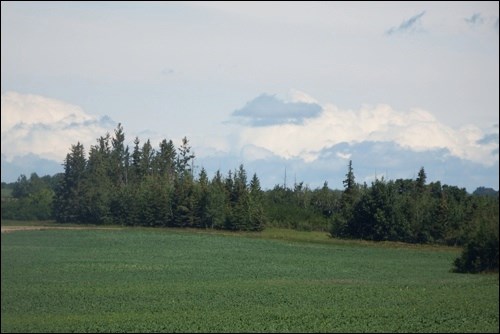Across the province, seventy-five per cent of the pulse crops and fall and spring cereals are at their normal stages of development, while 70 per cent of the oilseeds are at their normal stages of development for this time of year, according to Saskatchewan Agriculture’s weekly Crop Report.
Many areas reported rain showers this week, with large amounts recorded in the west-central region. The Rosthern area received 54 millimetres of rain, the Kindersley and Moosomin areas 30 millimetres, the Biggar area 35 millimetres and the Frobisher area 20 millimetres. Many areas in the southwestern and west-central regions remain dry, including Gull Lake, Shaunavon, Outlook and Dinsmore, which have received less than 25 millimetres of rain since April 1.
Provincially, topsoil moisture conditions on cropland are rated as four per cent surplus, 67 per cent adequate, 24 per cent short and five per cent very short. Hay land and pasture topsoil moisture is rated as 61 per cent adequate, 28 per cent short and 11 per cent very short. Topsoil moisture is in shortest supply in the southwest. Crops, hay and pasture in these areas are affected by the dry conditions. In the parts of the south that received rain over the last few weeks, annual crop conditions have improved; however, hay yield is expected to be lower than average and pastures are expected to have reduced carrying capacity going into the summer months.
Less wind this week allowed producers to do some in-crop weed control, which had been interrupted in previous weeks due to strong winds.
The majority of crop damage this week was due to lack of moisture. Cutworms are still causing damage in some areas.
A complete, printable version of the Crop Report is available online at http://www.saskatchewan.ca/crop-report.
Follow the 2018 Crop Report on Twitter at @SKAgriculture.



